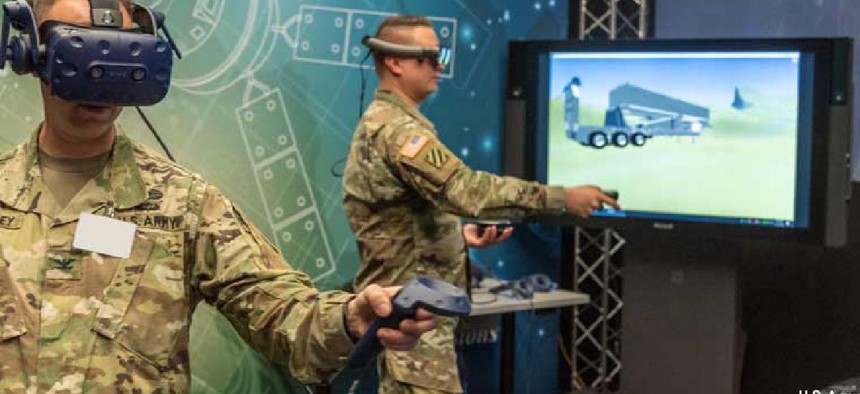AR-based prep helps soldiers get the most out of in-person training


Connecting state and local government leaders
When the pandemic makes learning at a distance a necessity, augmented reality may help the military maintain readiness.
When the pandemic makes learning at a distance a necessity, augmented reality may help the military maintain readiness.
AR-based soldier training has been beneficial during the pandemic, but it can also help the Army get the most out of what in-person training remains, said Cynthia Bedell, the director for the U.S. Army Research Lab's Computational & Information Sciences Directorate. It allows for "crew training on simulated systems but from your own room" where each user can see their orientation from their perspective, such as the driver seat versus the front passenger seat of a vehicle, she said.
"We could be trained up as high as we can be trained in a simulated environment before … we're out at the [National Training Center], so the time spent at the NTC is not doing the little things, it's doing the big things that matter that you can only do when you're actually on the real equipment," Bedell told reporters at the Association of the U.S. Army's (virtual) annual conference.
"You do the training, you operate together, you understand each other's commands, thoughts, signals and you learn to be a team so when you do eventually be able to come together and work on the equipment, you have much less time you have to spend just getting to know each other."
The AR tool can also adjust to soldiers' individual learning needs, providing graphs for visual learners or audio for those who prefer to take in information by listening.
The Army has an extensive AR and virtual reality portfolio -- from the popular, futuristic Integrated Visual Augmentation System goggles to AR eyewear for canines that allow human handlers to give commands while staying hidden. Army Research Lab has also pushed for researchers to use virtual and augmented reality to interact with data three-dimensionally.
The use of AR for soldier training could become the standard. Bedell said the systems have only been tested with special operators "because they don't get all upset when something's not perfect." But there's talk of tapping into the capability's potential for a wider pool of trainees.
"We've got work to do, but it holds tremendous potential and it actually has helped with some brainstorming sessions and course of action development while we've been COVID separated," she said.
The AR capability "allowed us to have people in California, people in Florida and people up at [U.S. Army Natick Soldier Systems Center] Labs look at the same sand table, plan an operation, understand all of the branches and sequels of the operation if 'X' or 'Y' or 'Z' were to happen, and then to be able to gather at a completely different site and very quickly coalesce and execute the operation," Bedell said.
"They were at three different places and yet were able to land at that base and immediately move in without having to do anything but orient where they were."
This article was first posted to FCW, a sibling site to GCN.

NEXT STORY: DOD revs up 5G testbeds





